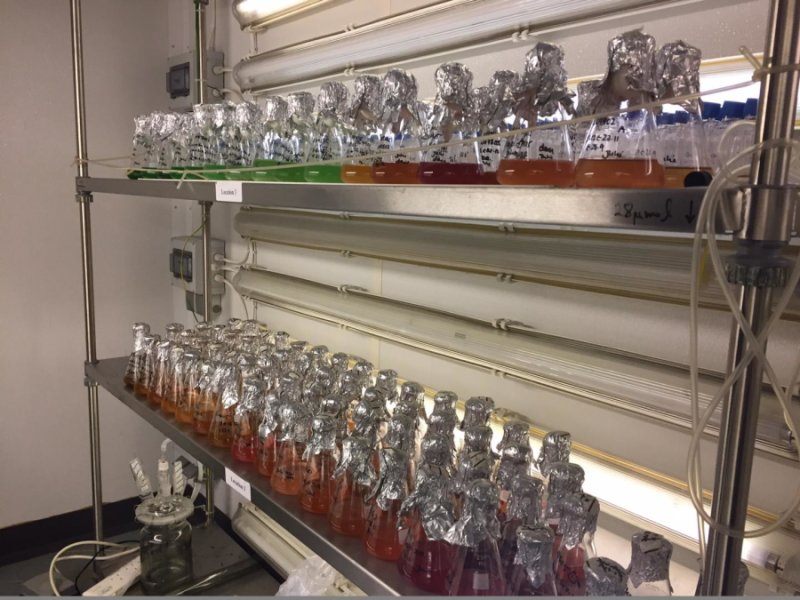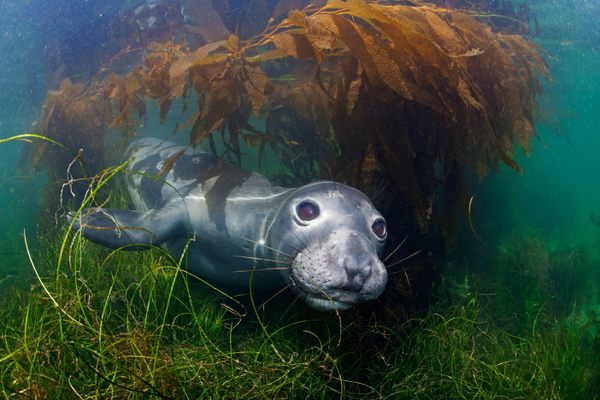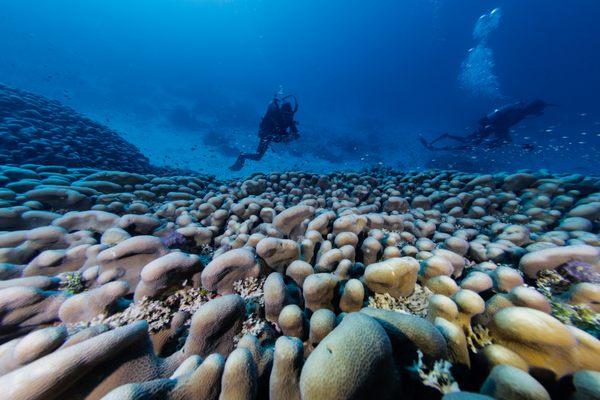These Marine Bacteria Can Change Their Colors in Different Types of Light
One researcher called them “planktonic chameleons.”

As painters such as J.M.W. Turner or Claude Monet knew well, the ocean can come in myriad different colors, from royal blue to dark grey and emerald green. That’s because of the different ways in which water absorbs sunlight. On a sunny day, the ocean looks blue because water absorbs colors in the red part of the light spectrum, so all that we see is what’s left behind in the blue light spectrum.
Much of this light absorption is carried out by microscopic marine algae called phytoplankton that, much like plants do on land, use chlorophyll to carry out photosynthesis, turning light energy into chemical energy that can be used to sustain life in the ocean.
Now, new research, published this month in Proceedings of the National Academy of Sciences, has discovered that Synechococcus cyanobacteria, a kind of phytoplankton that is abundant in ocean waters, are able to swiftly adapt their pigment content to absorb different types of light.
A team of researchers led by David Scanlan, a professor in Marine Microbiology at the University of Warwick, looked at data on seawater gathered by the Tara Oceans expedition, an international research effort to document global plankton ecosystems, in order to study the genetic composition of Synechococcus found in different parts of the ocean. The team identified a particular “chromatic adaptor” gene that enables these bacteria to adapt their pigment content according to different light. This allows them to survive and carry out photosynthesis in all kinds of water.
“Finding Synechococcus cells capable of dynamically changing their pigment content in accordance with the ambient light color—abundant in ocean ecosystems, making them planktonic ‘chameleons’—gives us a much deeper understanding of those processes essential to keep the ocean ‘engine’ running,” Professor Scanlan said in a press release.
As phytoplanktons account for most of the transfer of carbon dioxide from the atmosphere to the ocean, it is hoped that learning more about them can shed light on how ocean environments adapt to climate change. “This will help improve how we look after our waters,” Professor Scanlan said, “and will allow us to better predict how oceans will react in the future to a changing climate with increasing levels of carbon dioxide in the atmosphere.”










Follow us on Twitter to get the latest on the world's hidden wonders.
Like us on Facebook to get the latest on the world's hidden wonders.
Follow us on Twitter Like us on Facebook